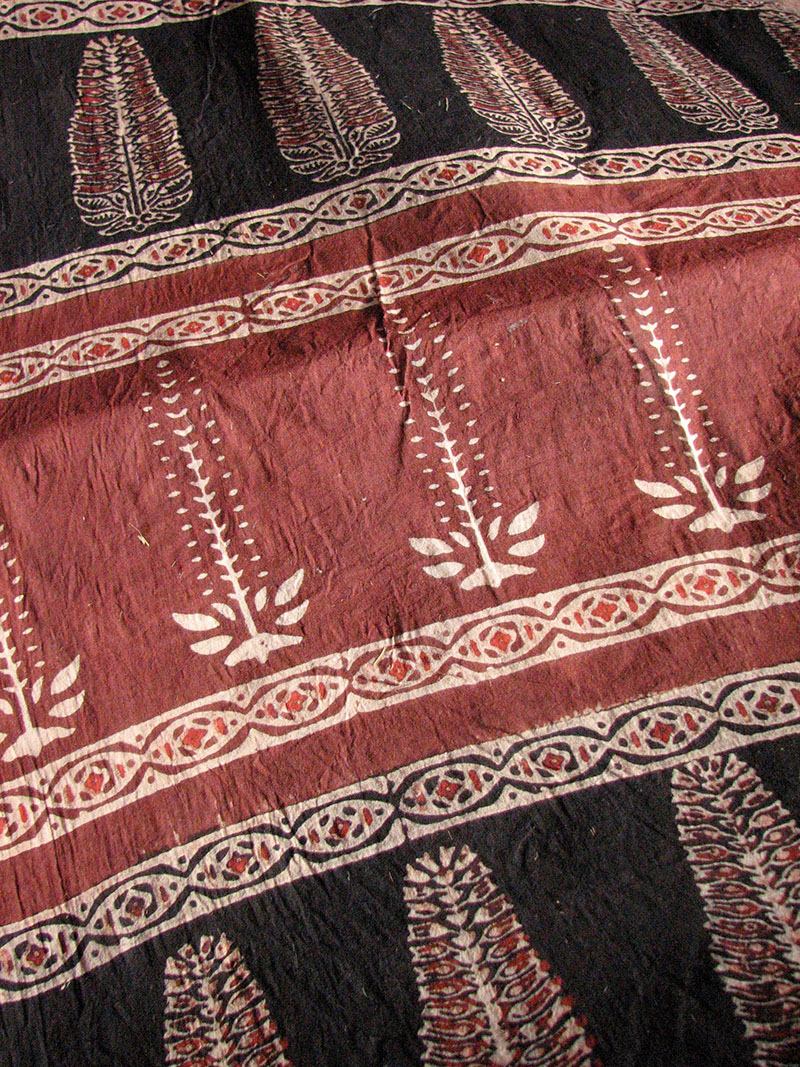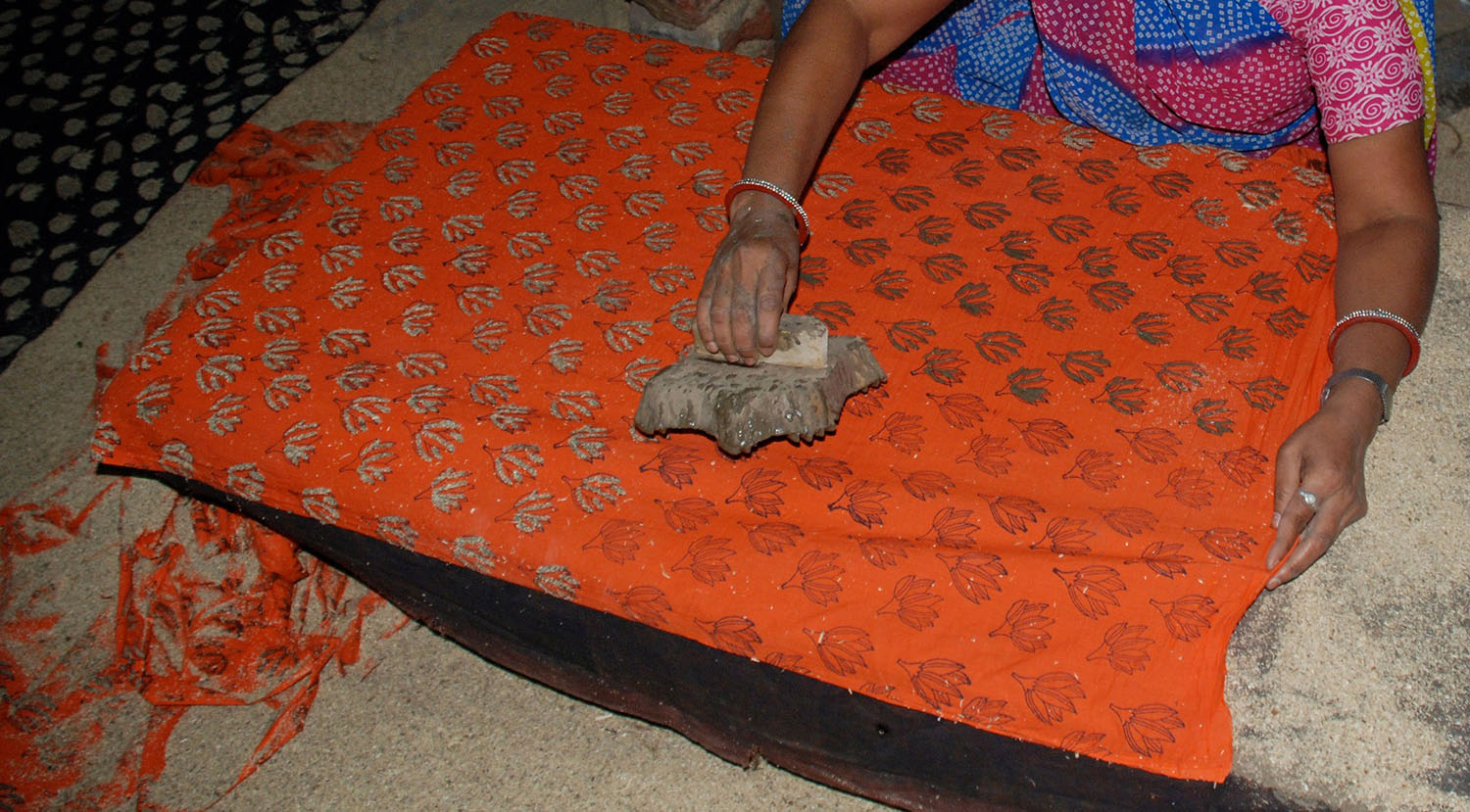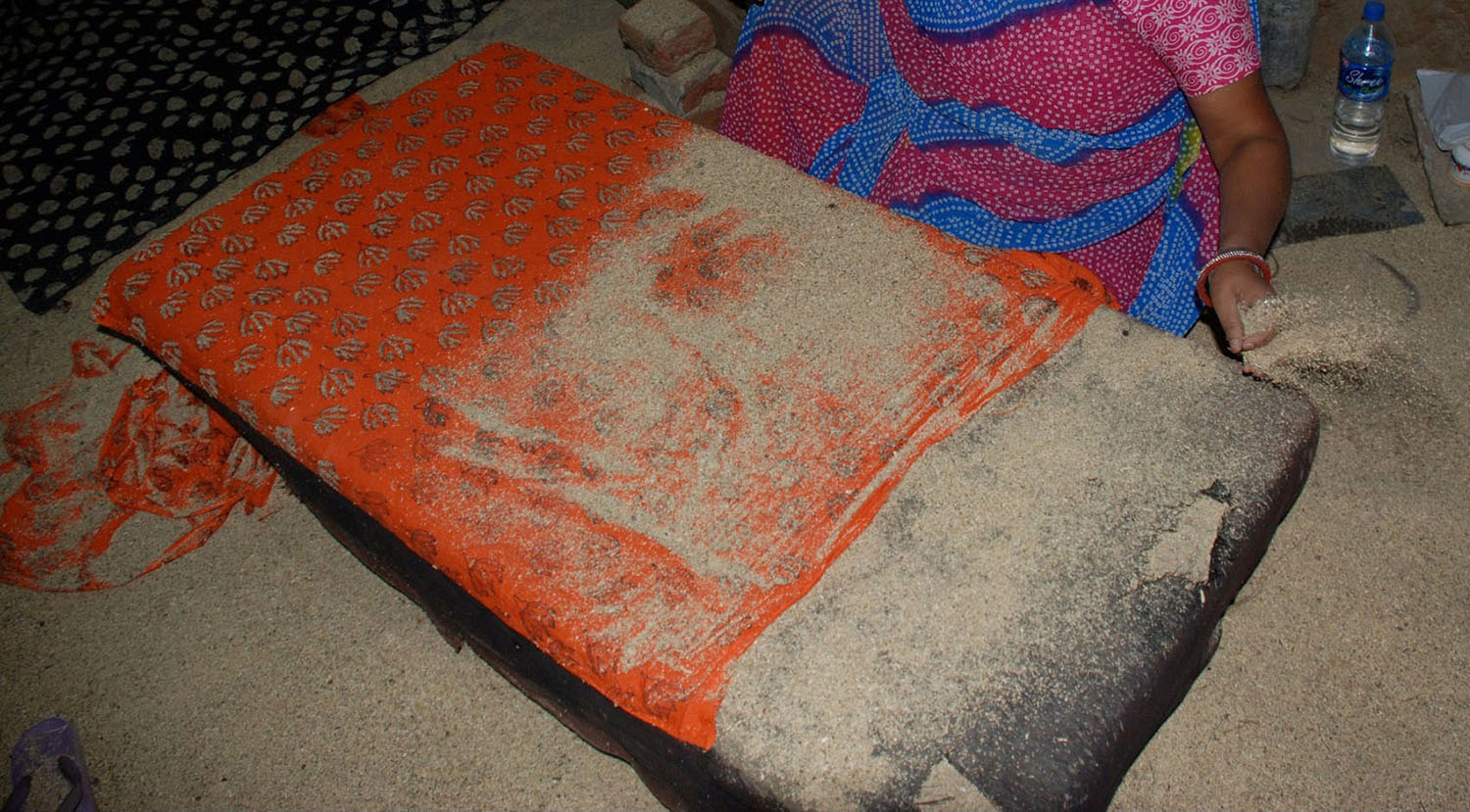ARTICLE
Dabu
The print was widely known for its popular usage on ghagras (skirts) for women. It was also used on the local outfits for women such as fetiya (a local term for skirts) and bandhej lugda (long fabric draped on the head). It was used in more expensive textiles such as the Maheshwari cotton and is now used on fabrics like silk, crepe and georgette. Modern designs such as geometric waves, graphic elements and shapes have been integrated into the motifs and more colour combinations using red, green and black are used. Apart from garments, it is frequently used in accessories, furnishings and home decoration, signifying that over years, it has garnered popularity that has broadened its consumer base and therefore its range of production. Additionally, organisation Aavaran in Udaipur has also contributed towards the revival and promotion of dabu.
Bibliography
Our website is currently undergoing maintenance and re-design, due to which we have had to take down some of our bibliographies. While these will be re-published shortly, you can request references for specific articles by writing to hellomapacademy@map-india.org.









